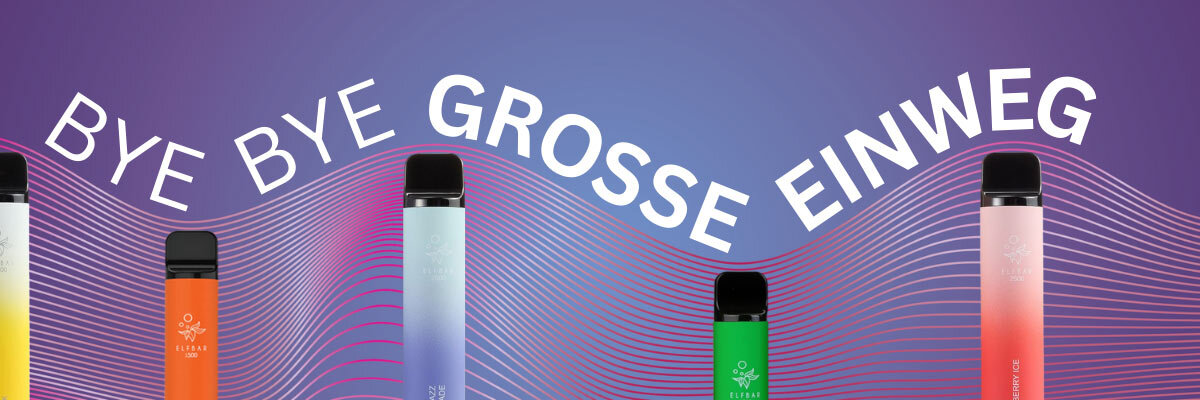Prof. Dr. Bernd Mayer: 7 common arguments against vaping


In the following we have already attached Prof. Bernd Mayer's report for you to "read directly". You can download the PDF at the end of the report. Let's now let Prof. Bernd Mayer have his say:
Seven common arguments against vaping
In the following, I discuss 7 claims that smokers are trying to discourage and discourage from switching to vaping. The text serves to inform the population objectively and independently of ideological and financial motives. For more information I refer to my Youtube channel "Vaping instead of smoking’, where published studies and other sources of information are linked.
1. Nicotine is a highly potent neurotoxin and addictive toxin that damages the heart and blood vessels.
In the usual dosage (vaping, Smoking) mimics Nicotine part of the effects of an endogenous substance (acetylcholine) and thereby activates nerve cells in the brain and in the vegetative nervous system. The effect as a neurotoxin, i.e. the blocking of the function of nerve cells, only occurs in the event of a massive overdose, which is not achieved with inhalation. Highly potent neurotoxins are not available in pharmacies without a prescription.
The dependence of smokers is due to a combination effect of Nicotine with other constituents of tobacco smoke along with conditioned behavior, the "smoking ritual". In the absence of tobacco smoke, the potential for addiction is Nicotine very low, so that most vapers feel much less addictive pressure than smokers. In addition, smokers do not die from their addiction but from the harmful effects of the components of tobacco smoke.
Leads in the cardiovascular system Nicotine, similar to caffeine, causes a slight increase in blood pressure and heart rate. These effects are clinically harmless, and nicotine does not increase the risk of serious illness (heart attack, stroke) or mortality. Nevertheless, people with severe cardiovascular diseases should refrain from consuming nicotine.
2. Particles in Steam accumulate in the lungs and impair lung function.
Unlike combustion smoke, von E-Cigarettes The aerosol (mist) formed is not solid particles (tar) but liquid droplets that cannot be deposited in the lungs. The substances dissolved in the droplets are exhaled or absorbed by the epithelial cells (oral mucosa, respiratory tract). Clinical studies show that switching from Smoking on vaping improves lung function in bronchial asthma or COPD and that years of vaping have no effect on the lung function of non-smokers.
The nature of the aerosol of E-Cigarettes is physically identical to aerosols used for inhalative therapy of lung diseases. The smaller the liquid droplets in the aerosol, the deeper they penetrate into the lungs. Deep penetration into the lungs promotes the absorption of dissolved substances, but does not result in the droplets being harmful to health. It is clinically irrelevant whether the droplets disperse in the upper airways or in the bronchioles.
3. Of the Steam contains carcinogenic substances, there is no lower limit for their effect.
By heating the Liquids small amounts of aldehydes, especially formaldehyde, are formed. Formaldehyde is an endogenous metabolite that circulates in the blood and is exhaled by humans. With normal use, the Steam similar concentrations of formaldehyde as the ambient air. Nitrosamines in the Steam warned. Nitrosamines are found in almost all foods, in the aerosol of E-Cigarettes these compounds can only be detected in traces, if at all.
According to the basic pharmacological law of dose-dependency of effects, there is always a concentration or dose of a substance that has no harmful effect. Otherwise, limit values for pollutants would be in the Environment and useless in food.
4. Flavorings could be harmful if inhaled.
In principle, counterfactual claims cannot be refuted. Flavorings “could” improve lung function when inhaled (or protect against hair loss, pimples, sweaty feet, etc.). There is no evidence that harmless food flavors turn into dangerous toxins when inhaled rather than consumed.
5. There are no long-term studies yet.
The seeming persuasiveness of this argument stems from the mistaken association of vaping with the Smoking, the harmfulness of which was only recognized decades later. vaping and Smoking may seem similar, but they are not. When burning Tobacco hundreds of carcinogenic or otherwise toxic substances are formed that do not occur when liquids evaporate.
The reference to the lack of long-term studies is a bogus argument that can be used to prevent any new product. Decades of observational studies are not available either for the approval of medicinal products or for the market launch of new foods. If there are no indications of harm and there are no plausible reasons for assuming harm, the products can be classified as safe. And that's at E-Cigarettes definitely the case.
6. Passive vaping is harmful to non-vapers.
All published analyzes of the air in steamed rooms show that the concentrations of pollutants are far below the recognized limit values for air quality. This also applies to nicotine, >95% of which remains in the body, so only traces of it are exhaled and released into the surrounding air. German authorities regularly claim that inhaling propylene glycol, a substance also used to create stage fog, causes respiratory irritation or irritation. In December 2016, the European Chemicals Agency (ECHA) rejected the application from the Federal Institute for Occupational Safety and Health (BAuA) for the classification of propylene glycol as an irritant to the respiratory tract after a thorough examination. There is no evidence of harmful effects from inhalation of propylene glycol.
Based on the available data, damage to health from passive vaping can be ruled out. However, it is a matter of politeness to take the sensitivities of other people into consideration and to vape discreetly in public or, if necessary, to refrain from doing so.
7. E-Cigarettes and flavored Liquids seduce teenagers to Smoking.
Epidemiological studies indicate that the increasing use of e-cigarettes by young people is accompanied by a decrease in smoking rates. The fact that minors are tempted to switch to tobacco cigarettes through the use of e-cigarettes is not very plausible and is not supported by the available data. Flavorings serve the taste and thus the attractiveness of e-cigarettes for adults.
The alleged seduction of minors would at best be an argument for better monitoring of compliance with youth protection laws, but in no way justifies restricting the free availability of e-cigarettes for adults.
This text is made available to the public for distribution in paper form (printout, flyer) or linked as a pdf file on the Internet without restriction. With excerpts
When citing, the source must be clearly identified. Changes to the wording are not permitted.
O. Univ.-Prof. dr Bernhard Michael Mayer
Graz, January 2, 2019
DOWNLOAD ORIGINAL DOCUMENT: 7 common arguments against vaping
(Source:https://ig-ed.org/)
x
Please log in to leave a comment.


